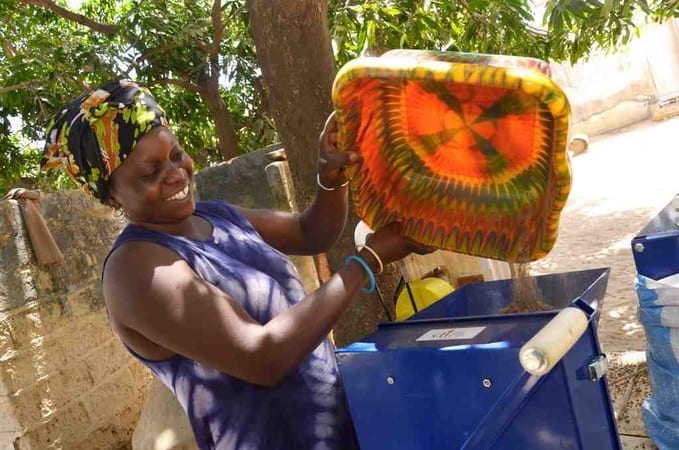Long a staple grain in the developing world, pearl millet has been grown in West Africa for over 4,000 years, and currently occupies 64 million acres of cropland in Africa and India. According to Purdue University, pearl millet, used primarily for animal feed in the United States but as a crucial food source throughout the rest of the world, can contain up to 60 percent more protein than corn.
In Senegal, in the major millet-producing region of Kaolack, a set of manual grain tools designed by the nonprofit Compatible Technology International (CTI) offers farmers the ability to thresh pearl millet more efficiently and sustainably. Termed Les Outiles De Cèrèales, these tools will give people in the developing world the opportunity to process pearl millet into flour and nut pastes that maximize yield, minimize waste, and improve agricultural efforts substantially.
Les Outiles De Cèrèales give small farmers the power to manually thresh millet without fuel or electricity, eliminating outside dependence and empowering them to process kilos of high-quality millet in short amounts of time. Traditionally, women pound the whole millet grain with a mortar and pestle and then winnow it in the wind, a process that is wasteful of both valuable time and portions of the crop itself that easily blow away following grinding. The CTI’s new grain tools allow farmers to extract usable flour at a rate that before was only attainable with access to expensive, modern agricultural technologies that were not accessible for smallholder families. The new grain tools offer an incredibly efficient way to produce a considerable amount of top-quality pearl millet.
The project has substantial support and has the ability to be implemented all over the developing world. Backed by Feed the Future Partnering for Innovation, a program run by the United States Agency for International Development (USAID), these grain tools have the opportunity to be utilized by people from all walks of life.
CTI first began distributing Les Outiles De Cèrèales in February 2014, and NGOs and microenterprises are already raving about the positive benefits provided to small farmers in improving crop yields and the entire millet planting process, as the seed can also be used to plant next year’s crop. Focusing on smaller enterprises that are generally overlooked by mainstream agricultural production systems, these grain tools will empower family farmers in Senegal and beyond to produce substantive, high-quality pearl millet. They will play a crucial role in improving the status of women by reducing the amount of time spent threshing the crop and will enable communities to develop to their fullest potential.













